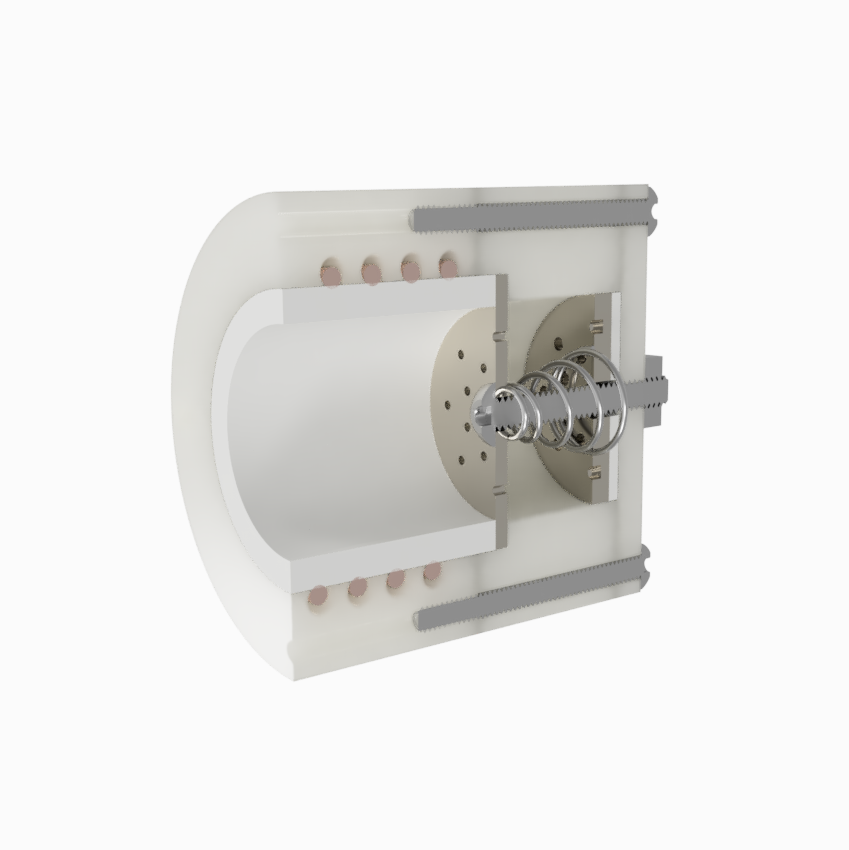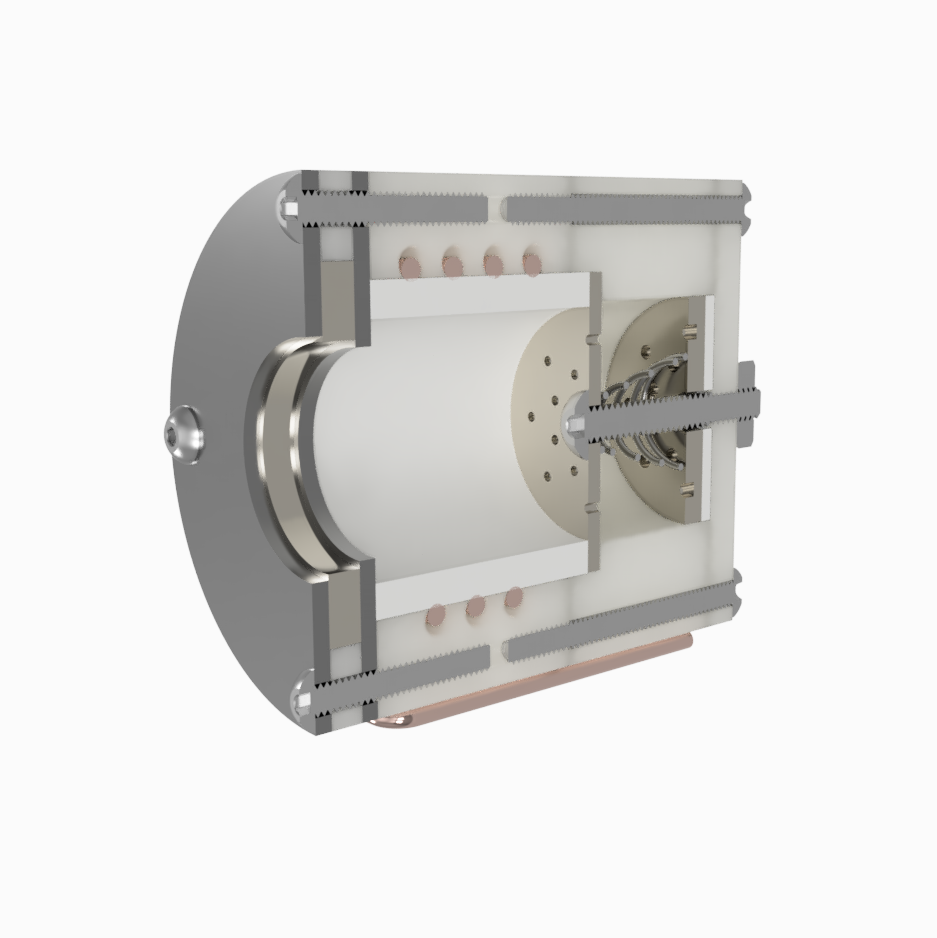In previous blog posts I introduced the AIS Io Series solid iodine fueled thruster concept design. Besides being an ultra-low cost solid iodine fueled thruster system, it focuses on a unique, highly modular core design based around high temperature rated 3D printed resin components. The heart of the thruster is the valveless iodine fuel delivery system directly integrated to the RF ICP ionizer module, providing the basis for versatile options. A simple alumina ceramic insert is used for the plasma discharge chamber to protect the 3D printed parts, overlapping gaps and seating against nickel plates for additional protection of the plastic structures.
The Io Series is currently comprised of two tech classes that are built off the main iodine fuel and ionizer modules – an RF gridded ion thruster, and an RF plasma thruster, which share the same fuel and ICP modules, as well as electronics driver boards. This extreme modularity opens up a wide range of options across multiple performance regimes for Cubesats. The Io Series aims to be in the 30-100W power class, in less than 1U form factor for the basic module.
Here we have a look at the Io Series RF gridded ion thruster tech class option. The simple grid module consists of nickel screen and acceleration grids with Ultem insulating spacer, all bolted directly to the main 3D printed Ultem body assembly via PEEK bolts.
The second tech class option is the RF Plasma thruster. A simple magnetic nozzle assembly, consisting of an Ultem 3D printed retainer, two Nickel 625 plates, and a permanent magnet are bolted to the main assembly.
The magnet assembly can be easily and rapidly swapped out for the ion grid assembly to convert to the RF gridded ion thruster., and visa-versa. The extreme modularity is at the core of the Io Series, with the goal of offering a wide variety of performance options for Cubesat propulsion needs, at several orders of magnitude reduced cost from similar systems on the market.






